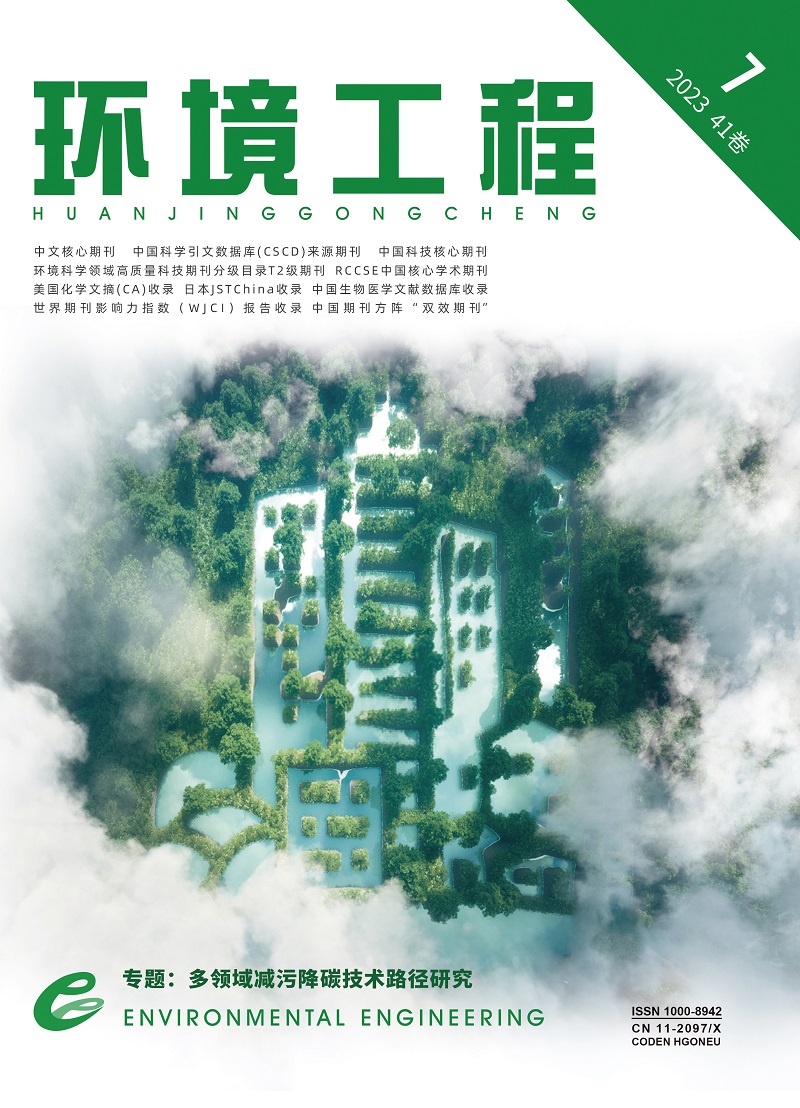| [1] |
薛成杰,方战强.土壤修复产业碳达峰碳中和路径研究[J].环境工程,2022,40(8):231-238.
|
| [2] |
杨楠,李艳霞,吕晨,等.唐山市钢铁行业碳排放核算及达峰预测[J].环境工程,2020,38(11):44-52.
|
| [3] |
ZHANG Y, LIU C, CHEN L, et al.Energy-related CO2 emission peaking target and pathways for China's city:a case study of Baoding city[J].Journal of Cleaner Production, 2019, 226:471-481.
|
| [4] |
田娟娟,张金锁.基于地理探测器的中国碳排放时空分布特征及驱动因素研究[J].生态经济,2022,38(7):13-20.
|
| [5] |
曹俊文,张钰玲.中国省域碳排放特征与碳减排路径研究[J].生态经济,2022,38(8):13-19.
|
| [6] |
胡艳兴,潘竟虎,李真,等.中国省域能源消费碳排放时空异质性的EOF和GWR分析[J].环境科学学报,2016,36(5):1866-1874.
|
| [7] |
王锋,秦豫徽,刘娟,等.多维度城镇化视角下的碳排放影响因素研究:基于中国省域数据的空间杜宾面板模型[J].中国人口·资源与环境,2017,27(9):151-161.
|
| [8] |
杨旺舟.中国农村居民食品消费碳排放的时空格局及其影响因素[J].中国环境管理,2022,14(3):112-117.
|
| [9] |
吐尔逊·买买提,丁为民,谢建华.基于神经网络的碳排放预测及影响因素分析[J].环境工程,2017,35(6):156-160.
|
| [10] |
曲鲁平,翟腾腾,张全景.基于灰色理论模型的山东省土地利用碳排放研究[J].山东农业大学学报(自然科学版),2019,50(2):290-296.
|
| [11] |
王少剑,莫惠斌,方创琳.珠江三角洲城市群城市碳排放动态模拟与碳达峰[J].科学通报,2022,67(7):670-684.
|
| [12] |
方创琳.新发展格局下的中国城市群与都市圈建设[J].经济地理,2021,41(4):1-7.
|
| [13] |
WANG Y, NIU J, LI M, et al.Spatial structure and carbon emission of urban agglomerations:spatiotemporal characteristics and driving forces[J].Sustainable Cities and Society, 2022, 78(3):103600.
|
| [14] |
LI F, XU Z, MA H.Can China achieve its CO2 emissions peak by 2030?[J].Ecological Indicators, 2018, 84:337-344.
|
| [15] |
XU G, SCHWARZ P, YANG H.Adjusting energy consumption structure to achieve China's CO2 emissions peak[J].Renewable and Sustainable Energy Reviews, 2020, 122:109737.
|
| [16] |
YUAN J, XU Y, HU Z, et al.Peak energy consumption and CO2 emissions in China[J].Energy Policy, 2014, 68:508-523.
|
| [17] |
NIU S, LIU Y, DING Y, et al.China's energy systems transformation and emissions peak[J].Renewable and Sustainable Energy Reviews, 2016, 58:782-795.
|
| [18] |
冯烽,白重恩.广东省能源需求预测与碳排放达峰路径研究:基于混合单位能源投入产出模型[J].城市与环境研究,2019(2):8-27.
|
| [19] |
赵金辉,李景顺,王潘乐,等.基于Lasso-BP神经网络模型的河南省碳达峰路径研究[J].环境工程,2022,40(12):151-156
,164.
|
| [20] |
韩楠,罗新宇.多情景视角下京津冀碳排放达峰预测与减排潜力[J].自然资源学报,2022,37(5):1277-1288.
|
| [21] |
刘菁,赵静云.基于系统动力学的建筑碳排放预测研究[J].科技管理研究,2018,38(9):219-226.
|
| [22] |
袁晓玲,郗继宏,李朝鹏,等.中国工业部门碳排放峰值预测及减排潜力研究[J].统计与信息论坛,2020,35(9):72-82.
|
| [23] |
徐磊,董捷,张俊峰,等.基于SD模型的湖北省农业碳排放系统仿真与政策优化[J].资源开发与市场,2017,33(9):1031-1035.
|
| [24] |
王火根,肖丽香,廖冰.基于系统动力学的中国碳减排路径模拟[J].自然资源学报,2022,37(5):1352-1369.
|
| [25] |
赵先贵,肖玲,马彩虹,等.山西省碳足迹动态分析及碳排放等级评估[J].干旱区资源与环境,2014,28(9):21-26.
|
| [26] |
李国平,吕爽."双碳"目标视角下的京津冀产业结构优化研究[J].河北经贸大学学报,2022,43(2):81-89.
|
| [27] |
张巍.基于STIRPAT模型的西安市碳足迹预测和情景分析[J].生态经济,2021,37(4):25-29.
|
| [28] |
ANSELIN L.Spatial Econometrics:Methods and Models[M].Springer Science & Business Media,1988.
|
| [29] |
李涛,薛领,李国平.产业集聚空间格局演变及其对经济高质量发展的影响:基于中国278个城市数据的实证分析[J].地理研究,2022,41(4):1092-1106.
|


 Login
Login Register
Register E-alert
E-alert






 DownLoad:
DownLoad: